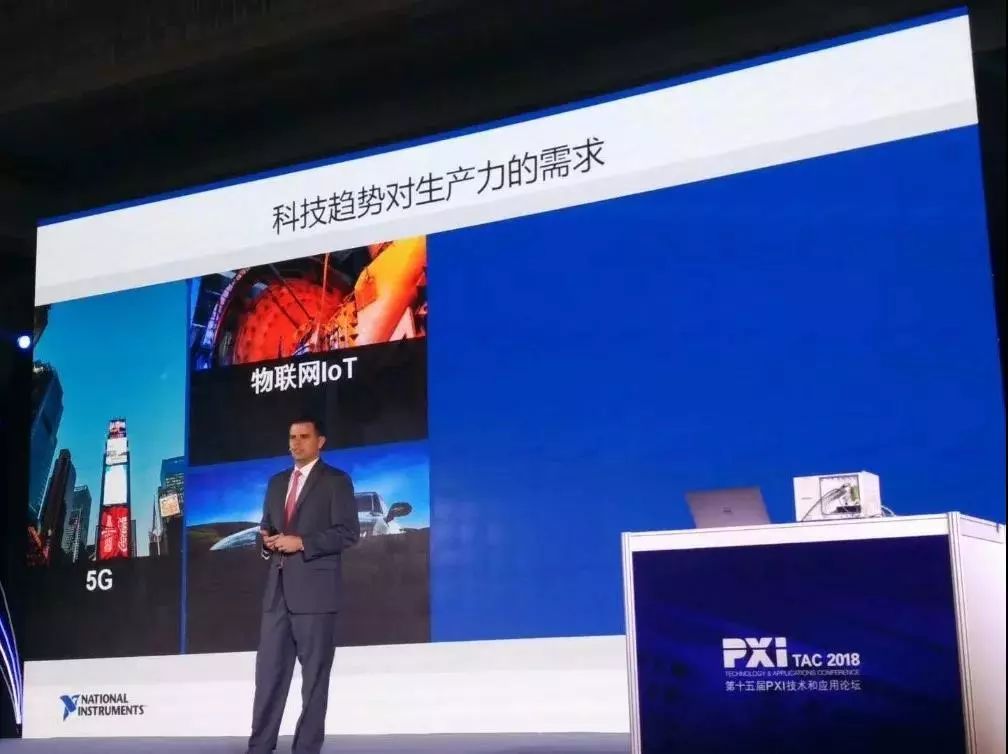While bringing convenience to users, the increased electrification of automobiles brings more challenges to engineers. The trend of intelligence, connectivity, and electrification has introduced more electronic elements into automobiles, and the system complexity has increased significantly, but the development cycle has not been extended accordingly, and the development and verification test time has even been shortened due to fierce market competition. How to complete development or test verification tasks within a limited time has become one of the most concerned issues for development engineers and verification engineers. As Jeff Philips, Director of Automotive Marketing at National Instruments (NI) pointed out in an article: I have visited verification engineers from automotive customers around the world, including automakers and Tier 1 suppliers. The topics of the conversations are different, but the essence is very similar. Most of them revolved around "not enough time to test" and "no budget to buy new equipment" and other issues.

Luke Schreier, Vice President of NI Automated Test Market, delivered a speech at the 15th PXI Technology Forum
Automotive verification testing requires flexible solutions
Jeff Philips said that traditional auto parts testing methods are mainly purely physical tests. Doors, windows, steering columns, lighting and seats are all mechanically tested to verify physical performance and life cycle. These test items require test equipment Mainly vibration table, environmental chamber, actuator and data acquisition system. Nowadays, every major component has evolved into a complex electromechanical system, such as car lights or car seats. It is no longer a simple component, but a subsystem with multiple functions. These systems integrate ECUs, sensors, Actuator and communication with other parts of the vehicle are combined together, including sensing, calculation and control functions. The increasing complexity of automotive subsystem systems poses challenges to modeling, software design, regression testing, hardware-in-the-loop (HIL) testing, and system integration, which can’t be solved by spending more time or investing more money. Design and The verification test team adjusts the development and test methods in time, and uses the power of modular tools to ensure the development progress, control the system cost, and improve the system reliability and functional safety.

Jia Qingchao, NI Asia-Pacific Automotive Marketing Manager
Luke Schreier, vice president of NI, emphasized that the automotive market is changing rapidly, and the feature of NI solutions is to return the initiative to customers. "From the customer's point of view, demand changes rapidly. NI provides the best tools and platforms to help users meet the changing needs for testing, but exchanges the initiative to users," Luke Schreier said, whether it is autonomous driving or In the Internet of Vehicles, the technological development has not yet stagnated, so the demand changes rapidly. "New things are needed to join in, and changes in requirements have caused NI to focus more on the actual needs of users instead of fixed solutions."
V2X is indispensable in autonomous driving
At present, there are two mainstream vehicle networking technology standards, one is LTE-V and the other is 802.11p, which are promoted by the 3GPP and IEEE respectively. According to Tu Fangze, a market engineer for NI radio frequency technology, these two technologies have their own characteristics. The two technologies are similar in that they both use Orthogonal Frequency Division Multiplexing (OFDM) modulation technology, in which data blocks are arranged to be transmitted by equidistant sub-carriers. .
There are three main differences. First, the two synchronization methods are different. 802.11p does not have a base station, so synchronization is achieved through frame synchronization, and the data packet contains synchronization information. And LTE-V can be synchronized with the base station, can also be synchronized with GNSS, or adopt frame synchronization.
Secondly, the two long-distance transmission modes are different. If the communication range exceeds 1 km, 802.11p needs to deploy a large number of RSUs (drive test units, similar to base stations) to achieve remote communication, but LTE-V can reuse communication base stations for related transmissions.
Third, the system evolution is different. Among the three application scenarios envisaged by 5G technology, high-reliability and low-latency communication (uRLLC) is an application scenario developed specifically for in-vehicle communication. "At present, we have not seen the evolution of 802.11p. From a domestic point of view, the LTE-V (and next-generation) protocol is more focused on both the national level and the industrial chain." Tu Fangze said.
Jia Qingchao believes that V2X is indispensable for the development of autonomous driving in the future. "When there are obstacles on the road or the weather is bad, the sensor blind zone expands, and accidents may occur. With V2X, you can know the road conditions ahead in advance. V2X is a necessary supplement to bicycle intelligence. It can be said that the car can realize automatic driving. One link is missing."
For NI, it is precisely because of the introduction of V2X that it can better cover different test scenarios. "This is the advantage of NI. Using our PXI platform, different modules can be used to achieve different measurement functions. Our VRTS (vehicle radar test system) and V2X test system are all in the PXI platform. Users use PXI as a platform. You can perform sensor fusion tests on millimeter wave radars, cameras, V2X, etc." Tu Fangze said.
Have a respect for safety
The influx of new technologies and new business models have caused changes in the original stable structure of the automotive industry, bringing opportunities to new companies and challenges to traditional companies. Jia Qingchao believes that the current automobile industry is somewhat similar to the mobile phone industry a decade ago. The traditional mobile phone giants Nokia and Motorola are very powerful, but they are about to face disruptive challenges from Apple. However, the automotive industry still has its own characteristics, and the biggest difference from the mobile phone industry is safety. "Safety is the biggest difference, and the barriers to entry into the automotive industry are high," said Jia Qingchao. Technology companies have capital and technical advantages, so they can quickly cut into relatively easy areas in the automotive industry, but to gain a firm foothold, more needs to be done. "Respect for automotive traditions and have a sense of reverence for safety. Functional safety is the core requirement of the automotive industry."
On the development route of autonomous driving technology, most technology companies choose one-step development ideas and directly develop L3 and L4 level autonomous driving, while traditional car manufacturers are more conservative and usually choose a gradual development route, that is, gradually transition from L1, L2 to L3 or even higher level autonomous driving. "Traditional manufacturers have more obvious awe for security," Jia Qingchao said. "However, no matter which route is taken, the core appeal is still to be tested. Through testing and verification (V&V) and scenario-based and system (S&S) testing, etc., Meet functional and performance requirements, information security requirements, functional safety and reliability requirements, etc."
"Safety is an important feature that distinguishes the automotive industry from other industries. There is no doubt that in the automotive industry, safety is always the first!" Jia Qingchao once again emphasized the importance of safety.
Place of Origin:Dongguan, China (Mainland)
Gauge: AWG 28 to AWG 16
Length: Customized
A perfect replacement of the broken or old windshield washer nozzle
Connector: Molex, JST, TYCO, AMP, JAM, KET,Amphenol, Wago,Weidmuller, Phoenix,
Wires & Cables: UL, VDE standards
Inspection: 100% inspection before delivery
Certification UL, IATF16949, CE,
Car Wiper Blades,Obd Jumper Harness,Electrical Cable Gland,Auto Wiper Blade
Dongguan YAC Electric Co,. LTD. , https://www.yacentercns.com
